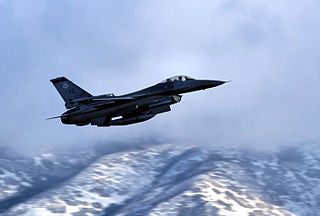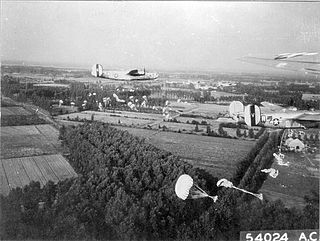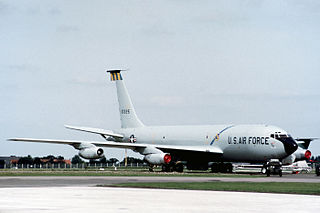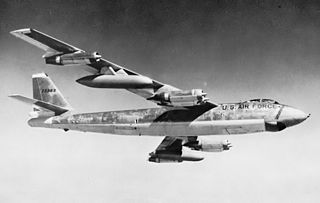
The 337th Test and Evaluation Squadron is a squadron of the United States Air Force. It is a part of the 53d Test and Evaluation Group of the 53d Wing. The 337th is stationed at Dyess Air Force Base, Texas, though it operates out of a number of bases throughout the United States.

The 95th Air Base Wing is an inactive United States Air Force unit that was last assigned to the Air Force Flight Test Center of Air Force Materiel Command at Edwards Air Force Base, California, where it was inactivated on 13 July 2012.

The 415th Flight Test Flight is a United States Air Force reserve unit. It is assigned to the 413th Flight Test Group of Air Force Reserve Command, stationed at Joint Base San Antonio-Randolph, Texas.

The 418th Flight Test Squadron is a United States Air Force squadron. It is assigned to the 412th Operations Group, Air Force Materiel Command, stationed at Edwards Air Force Base, California.

The 419th Flight Test Squadron is a United States Air Force squadron. It is assigned to the 412th Operations Group, Air Force Materiel Command, stationed at Edwards Air Force Base, California.

The 514th Flight Test Squadron is a squadron of the United States Air Force, which has been stationed at Hill Air Force Base, Utah since 1973, performing functional flight checks on aircraft undergoing major maintenance.

The 506th Bombardment Squadron is an inactive United States Air Force unit. It was last assigned to the 44th Bombardment Wing at Chennault Air Force Base, Louisiana, where it was inactivated on 15 June 1960.

The 546th Bombardment Squadron is an inactive United States Air Force unit. It was last assigned to the 384th Bombardment Wing at Little Rock Air Force Base, Arkansas, where it was inactivated on 1 September 1964.

The 547th Bombardment Squadron is an inactive United States Air Force unit. It was first activated during World War II as a Boeing B-17 Flying Fortress unit. After training in the United States, it deployed to the European Theater of Operations, where it participated in the strategic bombing campaign against Germany, earning two Distinguished Unit Citations. Following V-E Day, the squadron moved to France and was inactivated there in early 1946.

The 513th Electronic Warfare Squadron is a United States Air Force unit assigned to the 350th Spectrum Warfare Group at Eglin Air Force Base, Florida.

The 339th Bombardment Squadron is an inactive United States Air Force unit. It was last assigned to the 96th Bombardment Wing at Dyess Air Force Base, Texas, where it was inactivated on 15 March 1963.

The 425th Bombardment Squadron is an inactive United States Air Force unit. Its last assignment was with 308th Bombardment Wing at Plattsburgh Air Force Base, New York, where it was inactivated in 1961.

The 442nd Air Expeditionary Squadron is a provisional United States Air Force unit. It was converted to provisional status in May 2011. Its last assignment as a regular unit was to the 320th Bombardment Wing at March Air Force Base, California, where it was inactivated on 15 September 1960. It has been active since, operating a small air base in Iraq.

The 443d Air Expeditionary Squadron is a provisional United States Air Force unit. Its last assignment as a regular Air Force unit was to the 320th Bombardment Wing at March Air Force Base, California, where it was inactivated on 15 September 1960.

The 338th Combat Crew Training Squadron is a currently inactive United States Air Force unit. It was last assigned to the 96th Operations Group at Dyess Air Force Base, Texas, where it was inactivated on October 1, 1993.

The 407th Air Refueling Squadron is an inactive United States Air Force unit. It was last assigned to the 42nd Bombardment Wing at Loring Air Force Base, Maine, where it was inactivated on 1 October 1990.

The 428th Electromagnetic Warfare Flight is an active Air Force Reserve Command unit, stationed at Peterson Space Force Base, Colorado. It is a reserve associate squadron of the 4th Electromagnetic Warfare Squadron of the United States Space Force.

The 422d Bombardment Squadron is an inactive United States Air Force unit. Its last assignment was with the 305th Bombardment Wing at Bunker Hill Air Force Base, Indiana, where it was inactivated on 15 February 1961. The squadron was first activated in March 1942 as the 32d Reconnaissance Squadron, but shortly was renamed as a bombardment unit. After training in the United States, it moved to England in the fall of 1942, where it participated in the strategic bombing campaign against Germany, earning a Distinguished Unit Citation for its actions. Following V-E Day, the squadron moved to Germany, where it formed part of the occupation forces until inactivating in December 1946.

The 917th Air Refueling Squadron is an inactive United States Air Force unit. It was last active as a Geographically Separated Unit at Dyess Air Force Base, Texas, while assigned to the 43d Operations Group at Malmstrom Air Force Base, Montana, where it was inactivated on 1 July 1994.

The 96th Test Wing is a United States Air Force unit assigned to the Air Force Test Center of Air Force Materiel Command at Eglin Air Force Base, Florida. The wing was activated at Eglin in 1994 as the 96th Air Base Wing, the headquarters for all support units on Eglin, the largest installation in the Air Force. In 2012, it absorbed the mission and resources of the 46th Test Wing and added the mission of testing and evaluating weapons, navigation and guidance systems and command and control systems.




























